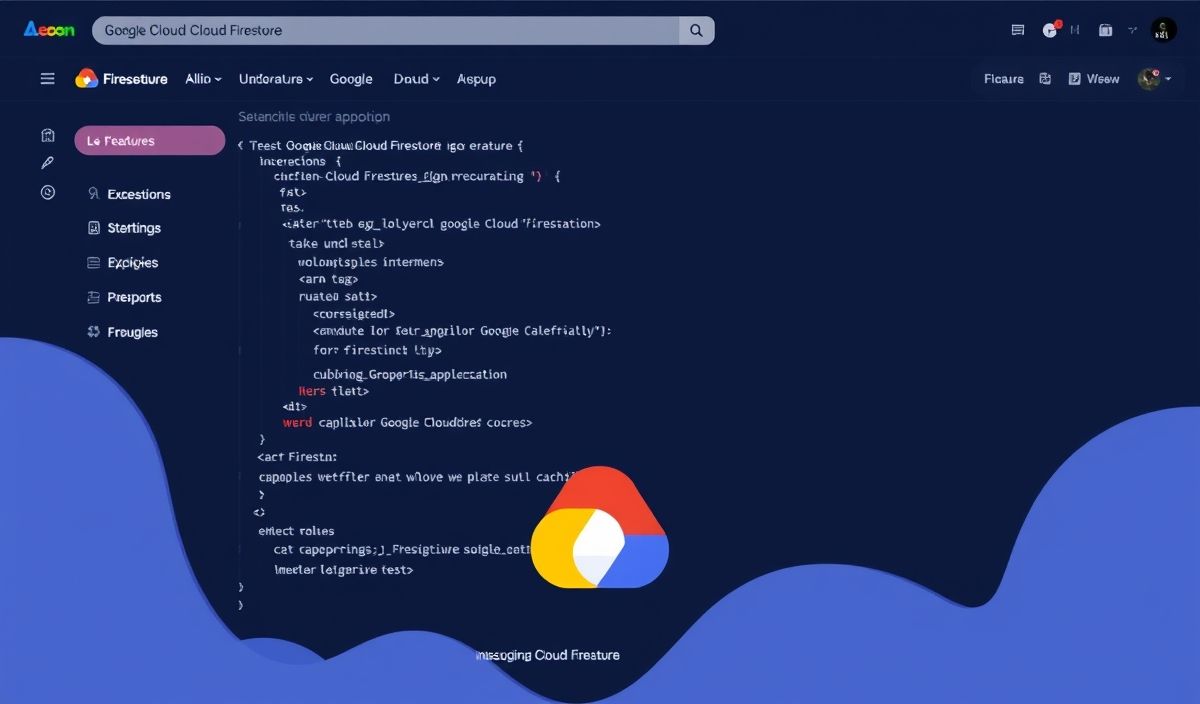Introduction to Google Cloud Firestore
Google Cloud Firestore is a flexible, scalable database for mobile, web, and server development from Firebase and Google Cloud Platform. It is a NoSQL document database that lets you easily store, sync, and query data for your applications at a global scale.
Getting Started with Google Cloud Firestore
First, let’s initialize your Firebase app and Firestore:
const firebase = require('firebase');
require('firebase/firestore');
const firebaseConfig = {
apiKey: "YOUR_API_KEY",
authDomain: "YOUR_PROJECT_ID.firebaseapp.com",
projectId: "YOUR_PROJECT_ID",
storageBucket: "YOUR_PROJECT_ID.appspot.com",
messagingSenderId: "YOUR_MESSAGING_SENDER_ID",
appId: "YOUR_APP_ID"
};
firebase.initializeApp(firebaseConfig);
const db = firebase.firestore();
CRUD Operations with Firestore
Adding Documents
To add a new document to a collection, you can use the add method:
db.collection("users").add({
firstName: "Ada",
lastName: "Lovelace",
born: 1815
})
.then((docRef) => {
console.log("Document written with ID: ", docRef.id);
})
.catch((error) => {
console.error("Error adding document: ", error);
});
Retrieving Documents
To retrieve a document from a collection, you can use the get method:
db.collection("users").get().then((querySnapshot) => {
querySnapshot.forEach((doc) => {
console.log(`${doc.id} => ${doc.data()}`);
});
});
Updating Documents
To update an existing document, you can use the update method:
db.collection("users").doc("YOUR_DOCUMENT_ID").update({
lastName: "Byron"
})
.then(() => {
console.log("Document successfully updated!");
})
.catch((error) => {
console.error("Error updating document: ", error);
});
Deleting Documents
To delete a document, you can use the delete method:
db.collection("users").doc("YOUR_DOCUMENT_ID").delete().then(() => {
console.log("Document successfully deleted!");
}).catch((error) => {
console.error("Error removing document: ", error);
});
Complex Queries in Firestore
Firestore supports complex queries like range queries and compound queries:
Range Queries
db.collection("users").where("age", ">=", 18).get()
.then((querySnapshot) => {
querySnapshot.forEach((doc) => {
console.log(doc.id, " => ", doc.data());
});
})
.catch((error) => {
console.log("Error getting documents: ", error);
});
Compound Queries
db.collection("users")
.where("age", ">=", 18)
.where("city", "==", "San Francisco")
.get()
.then((querySnapshot) => {
querySnapshot.forEach((doc) => {
console.log(doc.id, " => ", doc.data());
});
})
.catch((error) => {
console.log("Error getting documents: ", error);
});
Firestore Security Rules
Security rules allow you to define how your data should be structured, how it should be indexed, and when your data can be read from and written to. Here is a simple example:
service cloud.firestore {
match /databases/{database}/documents {
match /users/{userId} {
allow read, write: if request.auth != null && request.auth.uid == userId;
}
}
}
Firestore in a Server Environment
You can also use Firestore in a server environment using the Firebase Admin SDK. Below is an example:
const admin = require('firebase-admin');
admin.initializeApp({
credential: admin.credential.applicationDefault(),
databaseURL: 'https://${PROJECT_ID}.firebaseio.com'
});
const db = admin.firestore();
db.collection('users').get()
.then((snapshot) => {
if (snapshot.empty) {
console.log('No matching documents.');
return;
}
snapshot.forEach((doc) => {
console.log(doc.id, '=>', doc.data());
});
})
.catch((err) => {
console.log('Error getting documents', err);
});
Building a Full Application with Firestore
To demonstrate the utility of Firestore, let’s build a simple note-taking app where users can add, retrieve, update, and delete notes.
Initialize Firebase
const firebase = require('firebase');
require('firebase/firestore');
const firebaseConfig = {
apiKey: "YOUR_API_KEY",
authDomain: "YOUR_PROJECT_ID.firebaseapp.com",
projectId: "YOUR_PROJECT_ID",
storageBucket: "YOUR_PROJECT_ID.appspot.com",
messagingSenderId: "YOUR_MESSAGING_SENDER_ID",
appId: "YOUR_APP_ID"
};
firebase.initializeApp(firebaseConfig);
const db = firebase.firestore();
Add a Note
function addNote() {
const note = {
title: "Sample Note",
content: "This is the content of the sample note.",
created: firebase.firestore.Timestamp.now()
};
db.collection("notes").add(note)
.then((docRef) => {
console.log("Note written with ID: ", docRef.id);
})
.catch((error) => {
console.error("Error adding note: ", error);
});
}
Retrieve Notes
function getNotes() {
db.collection("notes").get()
.then((querySnapshot) => {
querySnapshot.forEach((doc) => {
console.log(`${doc.id} => ${doc.data().title}: ${doc.data().content}`);
});
})
.catch((error) => {
console.error("Error getting notes: ", error);
});
}
Update a Note
function updateNote(noteId) {
const updatedContent = {
content: "Updated content of the sample note."
};
db.collection("notes").doc(noteId).update(updatedContent)
.then(() => {
console.log("Note successfully updated!");
})
.catch((error) => {
console.error("Error updating note: ", error);
});
}
Delete a Note
function deleteNote(noteId) {
db.collection("notes").doc(noteId).delete()
.then(() => {
console.log("Note successfully deleted!");
})
.catch((error) => {
console.error("Error deleting note: ", error);
});
}
Using the above example, you can build a fully functional note-taking app using Google Cloud Firestore.
Hash: 0a11e25f0d48f3e03e694dce6210a8e4346d167b2621ee126981c4c57edf6966




